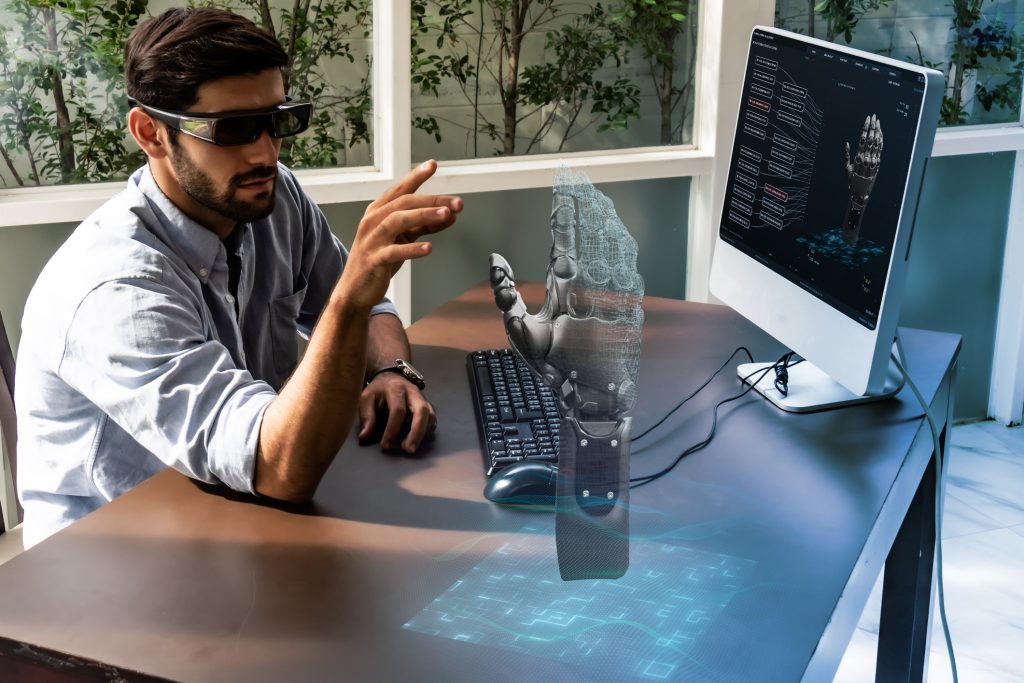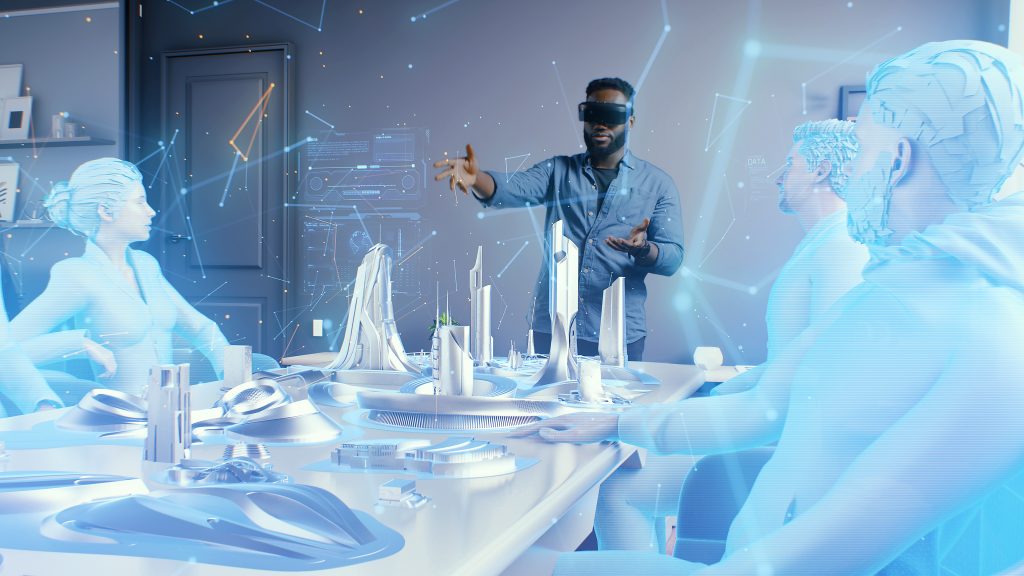
Part 3 of our “So, you want to enter the Metaverse?” Series
In the first two parts of Allison+Partners’ guide to entering the metaverse, we used plain English to define and explain the metaverse, then discussed business opportunities and the wisdom of jumping into metaverse development. Today, we clearly explain the 10 most important metaverse-related concepts everyone should understand – not ranked in any particular order.
1. AR, VR and MR.
You will “enter the metaverse” by wearing a headset that either combines the physical and digital worlds, or fully immerses you in a digital world.
- Augmented Reality (AR) overlays digital objects atop what you’re seeing in the real world, using your phone’s camera and screen, or AR glasses such as Nreal Light and Lenovo’s ThinkReality A3.
- Virtual Reality (VR) fully blocks out the real world and shows you digital worlds by donning goggles or headsets that immerse your eyes and ears directly within an alternate reality.
- Mixed Reality (MR) includes both AR and VR; MR headsets may combine augmented and virtual reality features.
2. Immersion and Presence.
When you use the internet today, you know you’re looking at a screen. By contrast, the metaverse will immerse you inside a 3D world and make you feel “present” there. VR headset screens sit right in front of your eyes, making everything look up close and real, even as you move your head and look down at your hands. In VR, the metaverse will “feel” different from seeing the same things on a 2D screen.
3. Avatars and Digital Twins.

Everyone knows video game characters such as Super Mario and Princess Peach, but in the metaverse, you can be the character – either your 3D “digital twin,” or an alternate version called an avatar, customized to your preference. Wish you were a little bit taller? Your metaverse avatar will be able to see and experience the world differently from your human body.
4. Metaverse Spaces.

Many people expect the metaverse to be one continuous space connecting every game and virtual experience, as seen in Ready Player One. But some metaverse developers are trying to lower the bar, at least to start. Meta now suggests that there won’t be one metaverse; instead, expect “metaverse spaces” that may or may not work together. Microsoft’s Satya Nadella agrees, and Sony’s latest metaverse plans separate “social” from “live network” spaces. If true, the metaverse may well resemble today’s fractured internet.
5. Interoperability.
The pivot from “one metaverse” to “metaverse spaces” comes from uncertainty about sharing assets between different companies’ metaverse offerings. For instance, no one knows whether your avatar, clothes, and currency from Sony’s metaverse will work in Niantic’s or Meta’s. Interoperability is the solution, but will require developers to follow common standards, rather than invent their own. In June 2022, 37 companies – including many major AR/VR/MR hardware, software, and web standard players – announced the founding of the Metaverse Standards Forum to drive open interoperability.
6. The Creator Economy.
Entire metaverse worlds, experiences, and assets are yet to be built, and creators – people with the skills to create realistic 3D objects, animations, and interactive experiences – will be key to populating them. For example, people will need to make all of the metaverse’s cars, hot air balloons, airplanes, and spaceships, and over time, creating or customizing metaverse content will be probably as easy as making TikTok videos today. Meta is already offering revenue-sharing deals to spur development of digital assets, targeting the current Creator Economy’s estimated 50 million people.
7. Blockchain, Crypto (currencies) and NFTs (oh my).
Today’s internet is a global web of connected computers that share data, enabling information to literally spread anywhere in seconds.
- Blockchain uses that web for encrypted but publicly visible transfers of digital currency – known as cryptocurrencies or “crypto” – that mimic government-backed currencies by being ownable or transferable by individuals and fluctuating in value.
- Non-Fungible Tokens (NFTs) are digital assets, including art, that use blockchain to guarantee individual ownership, transferability, and uniqueness.
8. Metaverse-to-Metaverse, Metaverse-to-Real World, and Real World-to-Metaverse Commerce.

Using conventional and digital currencies, people will make transactions inside and outside the metaverse: purchases made inside the metaverse for metaverse goods or services, inside the metaverse for real world goods or services, and in the real world for metaverse goods or services. In other words, you’ll use the metaverse to order pizza or clothing for your real home, just like smartphone apps today.
9. Metaverse Moments.

Cathy Hackl uses this term to describe real but fleeting previews of the metaverse as its structure and experiences continue to be built out. One example: Lil Nas X’s pandemic era virtual concert inside the game Roblox. If Roblox is a metaverse platform, this event – a professional musician entertaining real people in a virtual space – is an actual, widely documented moment in time that many people experienced in the metaverse, even if there’s no conventional physical evidence that it happened.
10. Ephemerality.
Controversially, Meta suggests that speech in the metaverse – like spoken words – will be temporary and not publicly recorded, so it shouldn’t be regulated like written communications. But given the likelihood of virtual harassment and other harms, users and governments may demand heavier moderation of metaverse interactions than today’s social media platforms, likely leveraging new moderation techniques such as AI. This will be a hot topic as adoption increases, and definitely an area to watch.
There are plenty of other important metaverse concepts to discuss, and more to say on the ones above. In our next posts, experts from Allison + Partners’ teams will explore big metaverse themes in greater detail, so stay tuned!
Jeremy Horwitz is Allison+Partners’ head of content for the Technology group, drawing upon three decades of prior experience as a journalist and entrepreneur to provide brand positioning, media relations, and content development counsel. Specializing in communications for the consumer electronics, semiconductor, gaming, and B2B sectors, he also has a deep background in diverse areas ranging from intellectual property law to popular entertainment, international dining, and luxury hospitality